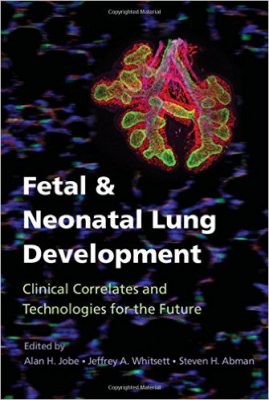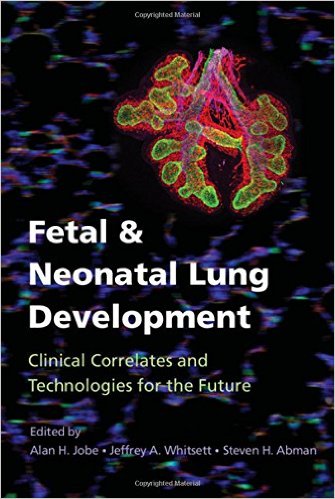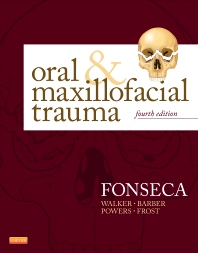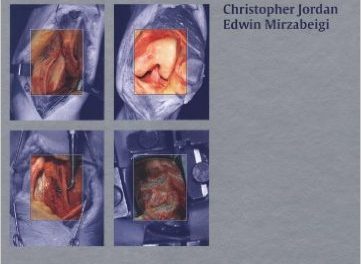 Editors: Alan H. Jibe, MD; Jeffrey A. Whitsett, MD; and Steven H. Abman MD
Editors: Alan H. Jibe, MD; Jeffrey A. Whitsett, MD; and Steven H. Abman MD
Publisher: Cambridge University Press – 324 pages
Book Review by: Nano Khilnani
In the United States, within the whole range of respiratory diseases, lung cancer probably has the largest number of people who develop it. The American Cancer Society’s estimates for lung cancer in the U.S for 2016 are: about 224,390 new cases of lung cancer (117,920 in men and 106,470 in women). There were about 158,080 deaths from lung cancer (85,920 in men and 72,160 in women)
The organization also indicates that lung cancer is by far the leading cause of cancer death among both men and women. About 1 out of 4 cancer deaths are from lung cancer. Each year, more people die of lung cancer than of breast, colon and prostate cancers combined.
Lung cancer mainly occurs in older people. About 2 out of 3 people or 66 percent of those diagnosed with lung cancer are 65 or older, while less than 2% are younger than 45. The average age at the time of diagnosis is about 70.
While this book is about lung development in the unborn, in infants and small children, we present the statistics above to inform readers that lung cancer is still a major killer among all types of cancers, even as the number of deaths from this disease has been declining in the U.S. over several decades.
Lung disease of various kinds including lung cancer affects about 600 million people worldwide, the editors point out. As always, knowledge of the development of disease empowers us to fight and win over disease.
This book provides an overview of the growth and development of the lung and its components down to the cellular and even the molecular level. It includes genetics, omics, systems biology, and the latest innovative imaging techniques to diagnose diseases.
Thirty-six specialists in developmental biology, neonatology, pediatrics, pulmonology, and other allied fields from the United States and five other countries – Australia, Canada, Netherlands, Switzerland, and the United Kingdom – authored the 17 chapters of this book presented below:
- The Genetic Programs Regulating Embryonic Lung Development and Induced Pluripotent Stem Cell Differentiation
- Early Development of the Mammalian Lung-Branching Morphogenesis
- Pulmonary Vascular Development
- Transcriptional Mechanisms Regulating Pulmonary Epithelial Maturation: A Systems Biology Approach
- Environmental Effects on Lung Morphogenesis and Function: Tobacco Products, Combustion Products, and Other Sources of Pollution
- Congenital Malformations of the Lung
- Lung Structure at Preterm and Term Birth
- Surfactant During Lung Development
- Initiation of Breathing at Birth
- Perinatal Modifiers of Lung Structure and Function
- Chronic Neonatal Lung Injury and Care Strategies to Decrease Injury
- Apnea and Control of Breathing
- Alveolarization into Adulthood
- Physiologic Assessment of Lung Growth and Development Throughout Infancy and Childhood
- Perinatal Disruptions of Lung Development: Mechanisms and Implications for Chronic Lung Diseases
- Lung Growth Through the “Life Course” and Predictors and Determinants of Chronic Respiratory Disorders
- The Lung Structure Maintenance Program: Sustaining Lung Structure During Adulthood and Implications for COPD Risk
Contents for the chapters are superbly organized for easy search, browsing, reading, and recall. Each chapter has the same basic components:
- Title
- Byline
- Abstract
- Keywords
- Introduction
- Presentation and discussion of topics and subtopics, with overviews
- Images and accompanying captions within discussions
- Summary and the Future
- References
A chief value of this book is the Summary and Future section at the end of each chapter. For example, lets us quote a portion of this section in chapter 9 entitled Initiation of Breathing at Birth:
“Understanding the physiological process in pulmonary and hemodynamic transition at birth is vital for designing the most effective and least injurious way to support infants when transition fails. The use of new innovative methods in experimental studies and a renewed interest in performing physiological observations in the delivery room has led to more insight into the understanding of transition after birth (italics and emphasis mine)
Other important points made in this section are found in this quote continuation of this section:
“It has also become clear that inappropriate ventilation and cord clamping can have a significant impact on the lungs, heart, and brain with long-term consequences, especially in preterm infants.”
This is an outstanding work on the subspecialty of fetal and neonatal pulmonology.
Editors:
Alan H. Jobe, MD, PhD is Professor of Pediatrics and Neonatology at Cincinnati Children’s and the University of Cincinnati School of Medicine in Cincinnati, Ohio.
Jeffrey A. Whitsett, MD is Kindervelt Professor of Pediatrics, Co-Director of the Perinatal Institute at Cincinnati Children’s Hospital and at University of Cincinnati School of Medicine in Cincinnati, Ohio.
Steven H. Abman MD is Professor of Pediatrics at the University of Colorado School of Medicine, and Director of the Pediatric Heart and Lung Center in The Children’s Hospital in Denver, Colorado.







